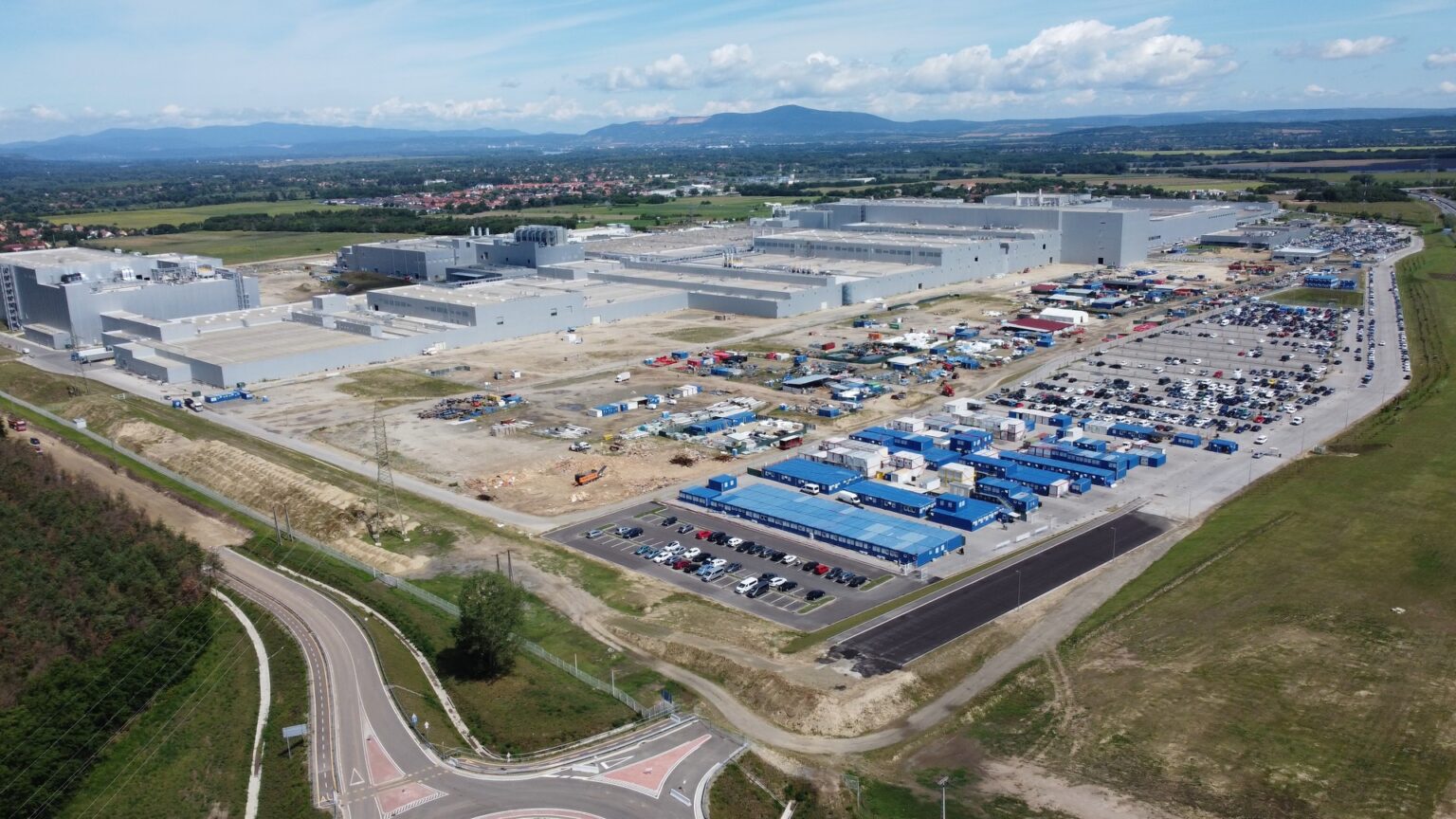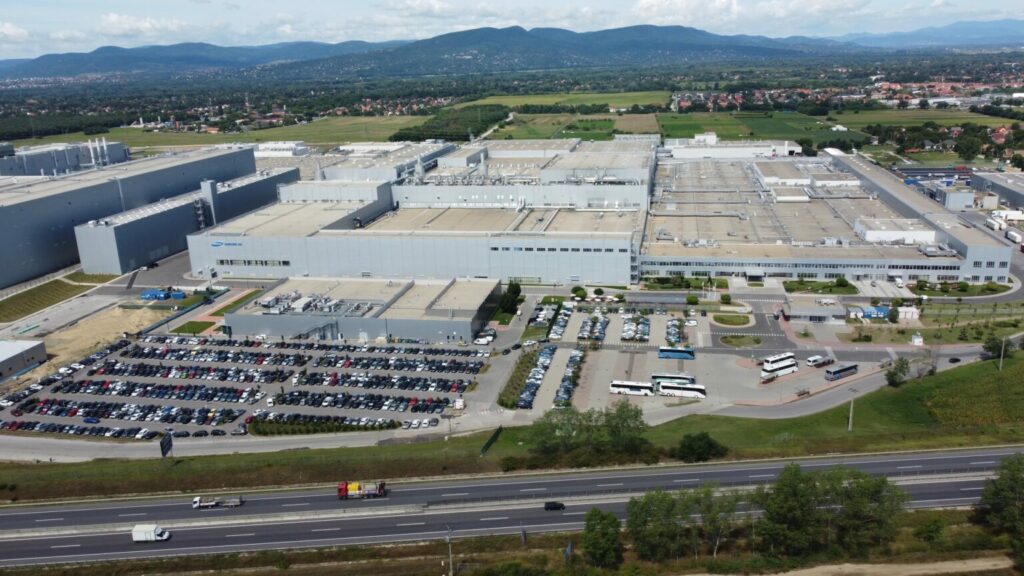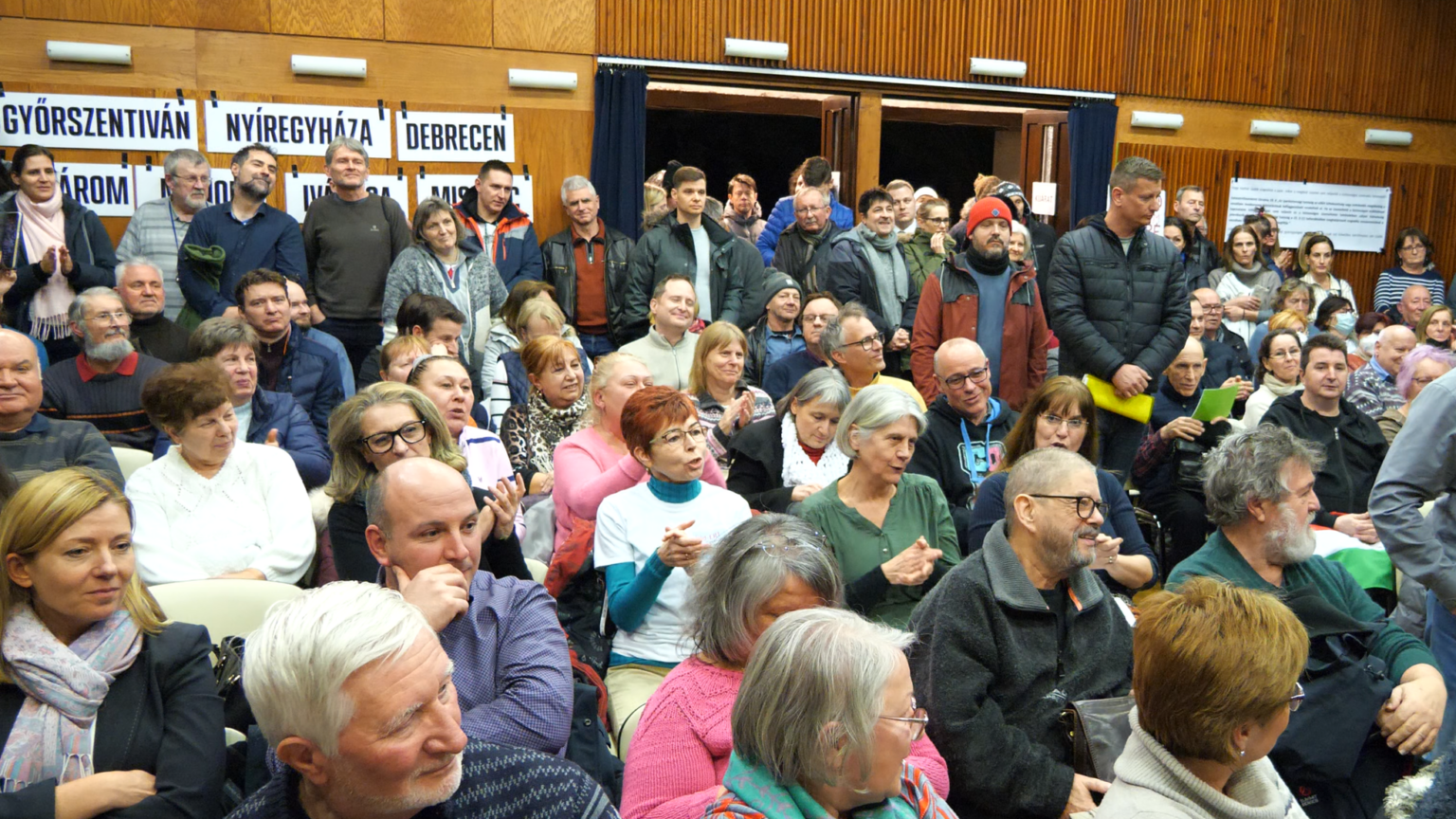The https://english.atlatszo.hu use cookies to track and profile customers such as action tags and pixel tracking on our website to assist our marketing. On our website we use technical, analytical, marketing and preference cookies. These are necessary for our site to work properly and to give us inforamation about how our site is used. See Cookies Policy
While the government talks about strict regulation of battery industry, the Göd factory lacks an environmental permit
Although members of the Hungarian government keep claiming that the South Korean and Chinese battery factories and processing plants established in Hungary can only operate under strict environmental regulations, this is far from the truth. According to our research, there is complete chaos in licensing and regulatory control of battery investments in Hungary. First, we look at the continuously expanding Samsung factory in Göd, which has been operating for five years.
Prime Minister Viktor Orbán, responding to an opposition party speech in Parliament, claimed that the rules on battery factories in Hungary are stricter than German environmental regulations. But this statement has no basis in reality. Not only can a battery factory operate without an environmental permit, but the Hungarian authorities carrying out the permit procedures may also interpret the Hungarian legislation differently.

Átlátszó revealed there is total chaos in the licensing of battery factories in Hungary. Government agencies have ruled that the government decree on licensing should be interpreted as meaning that a battery factory can be built without an environmental impact assessment if the preliminary assessment shows that the investment will not have a significant environmental impact.
In the case of Samsung SDI’s Göd plant, this is exactly what happened: despite further and further expansions, no environmental permit and no EIA were required; as a result, groundwater and air in the project area are not monitored and noise pollution from the plant is not substantially limited.
However, in the process of licensing CATL’s battery factory in Debrecen, the Hajdú-Bihar County Government Office decided to interpret the legislation differently. Contrary to previous practice, an environmental impact assessment was prepared for the factory in Debrecen. It found that, as the battery production process uses 2,000 tonnes of organic solvents – N-methyl-2-pyrrolidone (NMP) – per year, the relevant government decree requires an unified environmental use permit for the plant. The CATL investment also requires the construction of 10 monitoring wells to test annually for various hazardous or toxic components from battery production in the groundwater.
The anomaly in the interpretation of the legislation was also highlighted by the Environmental Protection Section of the Hungarian Chamber of Engineers. In connection with the Samsung factory in Göd, the professional organisation noted that under Government Decree 314/2005 (XII.25.), the Pest County Government Office should have carried out the environmental impact assessment and the unified environmental use permit procedure, but this did not happen.
The Environmental Protection Section of the Hungarian Chamber of Engineers notes that the technological process of battery production requires an EIA procedure to be carried out.

The Samsung mega-investment in Göd. No significant environmental impact has been identified by the environmental authority (Photo by our reader)
Battery factory in Göd has no environmental permit
Samsung’s first factory in Göd has been operational since 2018 and has been expanding continuously for five years.
The project is currently in its eighth phase of construction, with more phases to come. Construction permits are issued in stages by the construction authority, and so far six environmental procedures have been carried out. The Pest County Government Office has consistently concluded that the factory will have “no significant environmental impact” despite the extensions, and therefore no environmental impact assessment procedure is required.
In addition, Samsung constructed several parts of the building without a permit – all of which were subsequently granted a permit to remain in place, at most a fine was imposed on the company; but the environmental impact was still not assessed.
The 2020 decision to build Samsung’s second factory in Göd, however, stipulated that the project must also obtain an unified environmental use permit within two years – not because of the technological process of battery production, but because of the 130 MWth boilers to be installed at the new factory. Government Decree 314/2005 (25.12.2005) stipulates that installations with a thermal input of more than 50 MWth must obtain such a permit. In addition, the company was also required to provide a detailed description of the environmental impact of the battery production in the documentation required for the granting of the permit.
The environmental authority first asked the company for a statement on the unauthorised operation. Then, in a decision of 19 June, it found that the Göd factory
“had started and is carrying out activities subject to an unified environmental use permit – without such a permit.”
However, the plant’s operations were not banned or restricted, but Samsung SDI Magyarország Zrt. was ordered to carry out a full environmental review.
The decision by the authorities is roughly comparable to allowing someone to drive a car without a driving licence and a registration certificate – and then obtaining the missing permits in a subsequent “review”. Except that in this case, it is not a car, but a giant factory handling thousands of tonnes of dangerous substances.
Civilians finally prompted the authority to act
In May last year, Átlátszó reported that a local environmental NGO, the Göd-ÉRT Association, had carried out a water test which revealed the presence of the toxic solvent N-methyl-2-pyrrolidone (NMP), also used in battery production, in the water of the Göd wells.
Átlátszó also found out that there are no groundwater monitoring wells in the factory area. The water authority only ordered the installation of 5 monitoring wells in December 2022, but Samsung Zrt. has not yet prepared a report on the groundwater baseline.
The Göd-ÉRT Association requested an official investigation and filed a police report in May 2022 about the NMP pollution. The Dunakeszi Police Headquarters closed the investigation after one year “due to the absence of criminal offence”. The association then appealed to the Dunakeszi District Prosecutor’s Office, which annulled the police decision and ordered the continuation of the proceedings. However, the prosecutor’s office is waiting for the environmental authority to investigate the case to see whether it is necessary to continue the investigation.

The battery factory and its surroundings have been reclassified by the government as a 420-hectare “special economic zone”, where new industrial investments are expected.
Noise pollution, unmarked hazardous waste
The authority carried out a pre-announced inspection at the plant in April. They found that the plastic crates used to store the waste were not labeled, and the NMP containers did not have waste identification codes.
They also mention the noise from the operation of the plant, but note that the required noise reduction measures are being implemented. However, according to Krisztina Kecskés, a member of the Göd-ÉRT Association, noise pollution is not really addressed by the authorities.
„In our homes, we can hear the constant roar of the factory. It gets particularly loud at night, as if we lived beside an airport. The unbearable noise has made our lives miserable for years” – says Kecskés.
Hundreds of complaints from residents were sent to the environmental authority, and accredited noise measurement tests have shown that the factory does not comply with the noise limits, however, no substantive action has been taken.
The mayor promised a noise barrier, only a small fence was built
Zoltán Kammerer, the new mayor of Göd, who was elected in the spring by-election, supported by governing party Fidesz, announced on Facebook that thanks to successful negotiations with the factory, a 4.5 m high noise barrier would be built around the factory.
Then it turned out that the construction authority had not given permission for the planned wall. Samsung had nevertheless built a 100-metre-long fence. It is unknown whether the environmental authority has checked whether the construction protects against noise. However, residents say that noise pollution from the factory still exists.
Written and translated by Zsuzsa Bodnár. The original, more detailed Hungarian version of this story can be found here. Cover photo: The Samsung investment from the M2 road. The nearest residential buildings are 50-100 metres away, and thousands of people live 6-800 metres from the factory, which is expanding towards Alsógöd. Photo taken by our reader.


